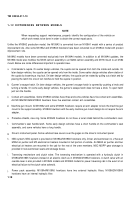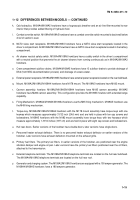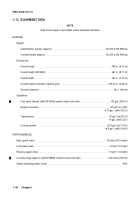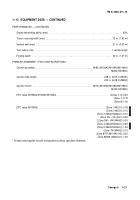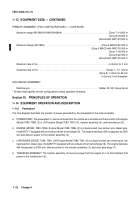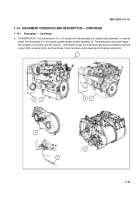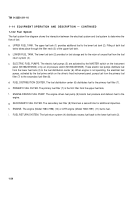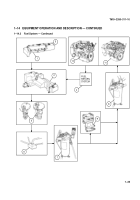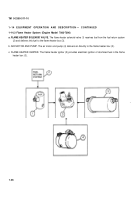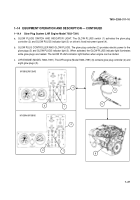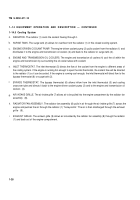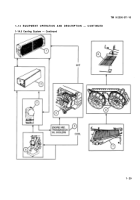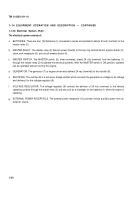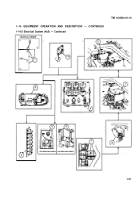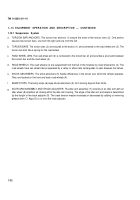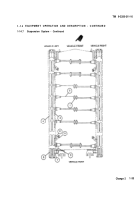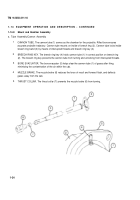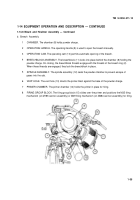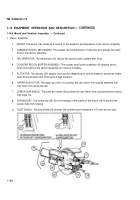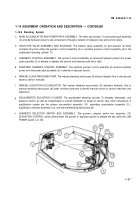TM-9-2350-311-10 - Page 66 of 775
TM 9-2350-311-10
1–14 EQUIPMENT OPERATION AND DESCRIPTION — CONTINUED
1–14.5 Cooling System
a.
b.
c.
d.
e.
f.
g.
h.
i.
RADIATOR. The radiator (1) cools the coolant flowing through it.
SURGE TANK. The surge tank (2) allows for overflow from the radiator (1) in this closed cooling system.
ENGINE-DRIVEN COOLANT PUMP. The engine-driven coolant pump (3) pulls coolant from the radiator (1) and
distributes it to the engine and transmission oil coolers (4) and back to the radiator or surge tank (2).
ENGINE AND TRANSMISSION OIL COOLERS. The engine and transmission oil coolers (4) cool the oil within the
engine and transmission by surrounding the oil cooler tubes with coolant.
INLET THERMOSTAT. The inlet thermostat (5) directs the flow of the coolant from the engine to different areas of
the cooling system. If the engine is running hot enough to open the inlet thermostat, the coolant flow will be directed
to the radiator (1) so it can be cooled. If the engine is running cool enough, the inlet thermostat will direct flow to the
bypass thermostat (6) or surge tank (2).
BYPASS THERMOSTAT. The bypass thermostat (6) allows inflow from the inlet thermostat (5) and cooling
crossover tube and directs it back to the engine-driven coolant pump (3) and to the engine and transmission oil
coolers (4).
AIR INTAKE GRILLE. The air intake grille (7) allows air to be pulled into the engine compartment by the radiator fan
assembly (8).
RADIATOR FAN ASSEMBLY. The radiator fan assembly (8) pulls in air through the air intake grille (7) across the
engine and pushes the air through the radiator (1) “honeycomb.” The air is then discharged through the exhaust
grille (9).
EXHAUST GRILLE. The exhaust grille (9) allows air circulated by the radiator fan assembly (8) through the radiator
(1) and back out of the engine compartment.
1-28
Back to Top

